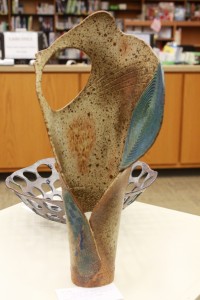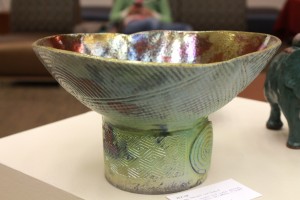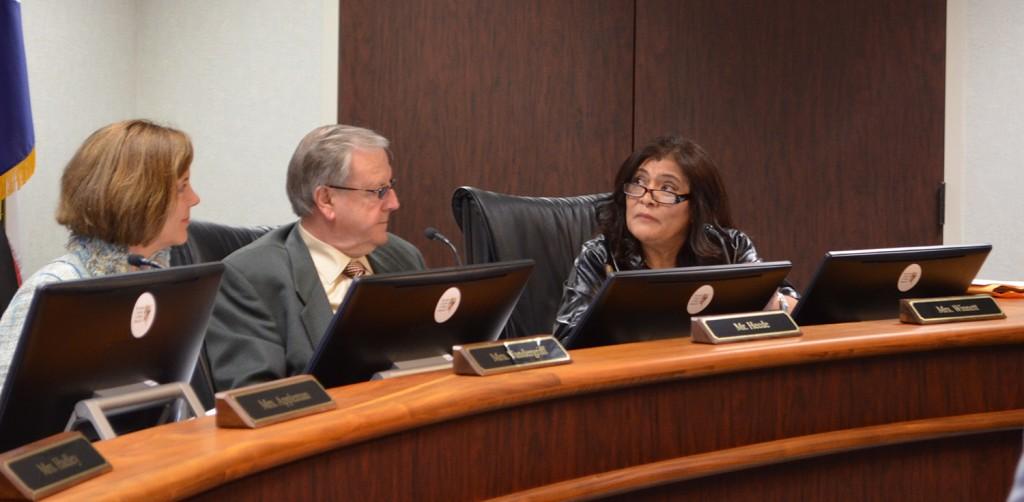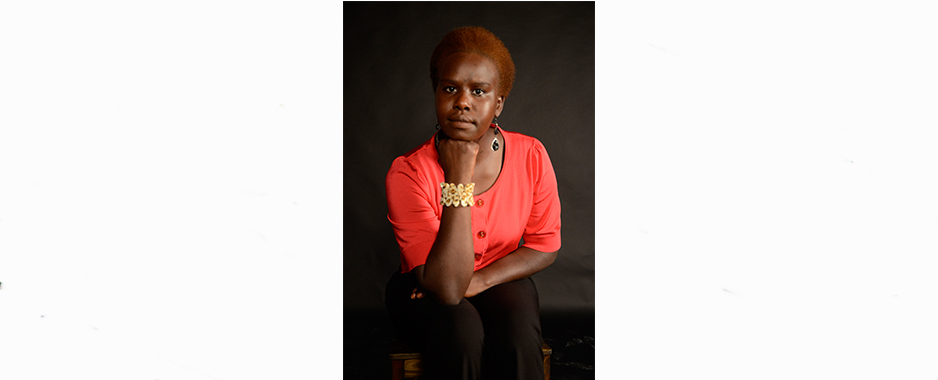By Heather Horton/reporter


Native American student Ralph Tobin turns his dreams into reality through the artistic process of clay sculpting.
With titles such as Water of love deep in the ground and Life goes on long after the thrill of living is gone, the meaning of each sculpture is as unique as its title.
The process of creation can take months.
“Basically, I dream stuff,” Tobin said. “That begins the process.”
Tobin’s creative process is heavily influenced from his Native American ancestry, which gives his ceramic creations an organic and even spiritual origin.
He learned about spirituality from his relatives, particularly an uncle who has been an example of what it means to live a spiritual life.
“There is a difference in spirituality and religion,” Tobin said. “Native Americans try to live a spiritual life by being in touch with their surroundings and also of being of service to others.”
Throughout his career, Tobin has worn many hats. He has worked as a graphic artist and as a teacher, just to name a few. As a teacher, Tobin said his service to his students was offered from his heart, not simply knowledge that comes from the brain.
This heartfelt revelation came as a result of taking part in a Native American custom called a sweat lodge. This process consists of entering a dugout cave-like, tented area surrounding a cluster of hot rocks. The rocks are stoked by pouring water over them throughout various rounds. Native Americans use this ceremony to induce a spiritual awakening upon its participants.
“I wanted the students to understand that I was giving them something. I was giving them knowledge, my input, my experiences and that was my gift to them,” Tobin said. “What they did with that was their gift back to me.”
Tobin can be found in the ceramics lab on NE Campus every Tuesday and Thursday sharing his passion for ceramic creation to students of different levels of expertise.
Tobin is considered a fire-keeper in Native American culture. “Firing” clay is one of the steps to creating ceramics, and working with fire is a natural process for him.
The ceramics class on NE Campus uses an American-style raku firing process. Tobin explained this process, which originates from Japanese culture, as a combination of “earth, wind, fire and self.” When these four elements are in tune and in line with one another, the process works. If they are not, then the piece is destroyed. However, a crack in a work of art does not mean the piece is destroyed.
“The Japanese honor the crack. If a raku piece cracks, they honor it because that was meant to be,” Tobin said. “It’s there to show you and to show the potter and the person who has the piece that they are just as flawed as the piece itself.”
This serves as a reminder that everyone has flaws, and people should not be so judgmental, Tobin said.
The process from beginning to end is a spiritual journey for Tobin who says working in clay is a god-like process.
“When I am working in clay, I am creating something,” he said. “I hope it will be beautiful and will be something people will look at and appreciate for the beauty that it is.”
Tobin’s art can be found in several different locations, one of which is the Cripple Tree Studio art gallery in Argyle. He also has work displayed in the Fine Arts Building on NE Campus and will be showing pieces at Mayfest in Fort Worth.
The most exciting part of his journey through the creation of ceramics is opening the kiln to see a finished product.
“You don’t know what you’re going to get, but you know it’s going to be beautiful,” Tobin said.



























